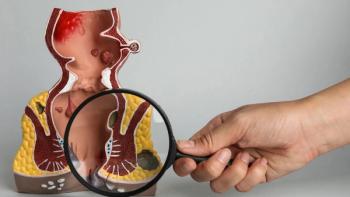
Multidisciplinary Care and Unmet Needs for Young Adults With Sarcoma

Specialized sarcoma centers enhance coordinated care for young adults, although travel and financial barriers persist, Dr. Vinayak Venkataraman stated.
Specialized, multidisciplinary care at high-volume sarcoma centers help young adults with sarcoma receive the most effective and coordinated treatment, although access to these centers and financial challenges remain, Dr. Vinayak Venkataraman said in an interview with CURE.
Venkataraman, director of Sarcoma Pathways and physician at Dana-Farber Cancer Institute, in Boston, explained that treatment for young adults is often intensive and requires close collaboration among experts in surgery, radiation and medical oncology, as well as pathology and radiology.
Because some patients cannot easily travel or afford to receive care at major centers, he often works in a shared-care approach with community providers. This allows treatment to be delivered closer to home while keeping expert oversight and access to clinical trials. The goal is to support better outcomes while reducing logistical and financial burdens for patients and families, he stated.
Venkataraman also serves as an instructor in medicine and affiliated faculty at the McGraw/Patterson Center for Population Sciences at Harvard Medical School.
Transcript
How do multidisciplinary care teams contribute to optimizing outcomes for young adult sarcoma patients? And are there gaps that still need to be addressed?
Multidisciplinary care, with very close collaboration between surgeons, radiation oncologists, medical oncologists, pathologists, radiologists and scientists, has really been at the forefront of effective sarcoma treatment. The best standard of care and recommendation I can give to any sarcoma patient is to at least be seen for a second opinion at a high-volume sarcoma center, typically a comprehensive cancer center closest to you. The reason being that the treatment is very nuanced and patient specific, and it really takes that expertise and close collaboration and discussion between all of these stakeholders to get the most effective treatment for patients.
For young adults, it’s even more important because, unlike some sarcomas seen more commonly in older adults, most sarcomas in young adults will require at least chemotherapy with radiation or surgery (or both) as part of their treatment. And it tends to be fairly intense treatment for many months, if not longer. It is very important that these patients are seen.
The challenges really are logistical and financial; the financial toxicity and access to care. We know that even though the best care is delivered at these major sarcoma centers, some patients, through distance, disability or insurance coverage, are just not able to access that level of care. One challenge that we face is how we bring the expertise to the community and empower community providers, in close collaboration with the sarcoma center, to provide that day-to-day care, such as receiving chemotherapy closer to home, while also making sure that the expert sarcoma center is well informed of their progress and that whatever care needs to be done at the specialized center is coordinated with the community providers.
I do share some patients who are young adults who are being treated in the community, but I follow them in a shared-care model with their providers. It allows them to get their treatment closer to home, have access to clinical trials as they arise at the main center and tries to reduce their financial toxicity. We also know that there are emotional, social and financial implications of receiving care closer to home, and so we try our best to optimize for that while making sure that they’re getting the expertise they need to have the best outcomes possible.
Transcript has been edited for clarity and conciseness.
For more news on cancer updates, research and education,




